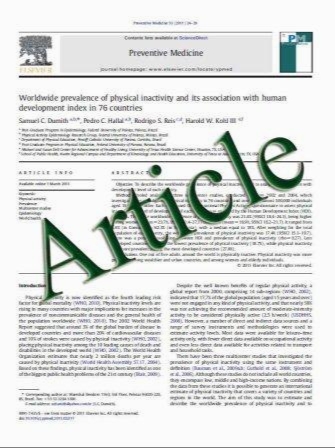Are commonly recommended dosages for vitamin D supplementation too low? Vitamin D status and effects of supplementation on serum 25-hydroxyvitamin D levels—an observational study during clinical practice conditions
- نوع فایل : کتاب
- زبان : انگلیسی
- مؤلف : G. Leidig-Bruckner & H. J. Roth & T. Bruckner & A. Lorenz & F. Raue & K. Frank-Raue
- چاپ و سال / کشور: 2010
Description
Summary Vitamin D deficiency is associated with increased fracture risk. The observational study aimed to investigate vitamin D status and supplementation in ambulatory patients. Only 20% of patients had optimal serum 25-hydroxyvitamin D [25(OH)D] levels. Commonly recommended dosages were insufficient to achieve clinically relevant increase of 25(OH)D levels. Higher dosages were safe and effective under clinical practice conditions. Introduction Vitamin D deficiency is associated with adverse health outcome. The study aimed to investigate vitamin D status and supplementation in ambulatory patients. Methods Nine hundred seventy-five women and 188 men were evaluated for bone status from January 2008 to August 2008 within an observational study; 104 patients (n=70 osteoporosis) received follow-up after 3 months. Dosage of vitamin D supplementation was documented and serum 25 (OH)D and parathyroid hormone (PTH) determined. Results In all patients (age, 60.4پ}14.1 years), distribution of 25(OH)D was 56.3پ}22.3 nmol/L (normal range, 52. 182 nmol/L) and PTH 53.8پ}67.5 ng/L (normal range, 11. 43 ng/L). The proportion of patients with 25(OH)D<25, 25 to <50, 50 to <75, .75 nmol/L was 7.5%, 33.3%, 38.9% and 20.2% in the total group and 20.1%, 38.5%, 30.8%, 10.6% at baseline in the follow-up group, respectively. After 3 months, 3.9% had still 25(OH)D<25 nmol/L; only 12.5% achieved 25(OH)D.75 nmol/L. In osteoporosis patients, 25(OH)D increased more in those taking .1,500 (median, 3,000) IU vitamin D per day (33.1پ}14.7 nmol/L) compared with .1,000 (median, 800) IU/day (10.6پ} 20.0 nmol/L) (p<0.0008). PTH decreased more in patients taking .1,500 IU/day (.13.2پ}15.2 ng/L) compared with .1,000 IU/day (.7.6پ}19.2 ng/L; p=0.29). 25 (OH)D was negatively correlated to PTH (r=.0.49, p< 0.0001). An increase of 25(OH)D.75 nmol/L resulted in normalised PTH. Conclusion Supplementation with higher vitamin D dosages (2,000.3,000 IU/day) is required to achieve a relevant increase of 25(OH)D and normalisation of PTH.
Osteoporos Int (2011) 22:231–240 DOI 10.1007/s00198-010-1214-5 Received: 16 September 2009 / Accepted: 19 January 2010 / Published online: 17 June 2010


